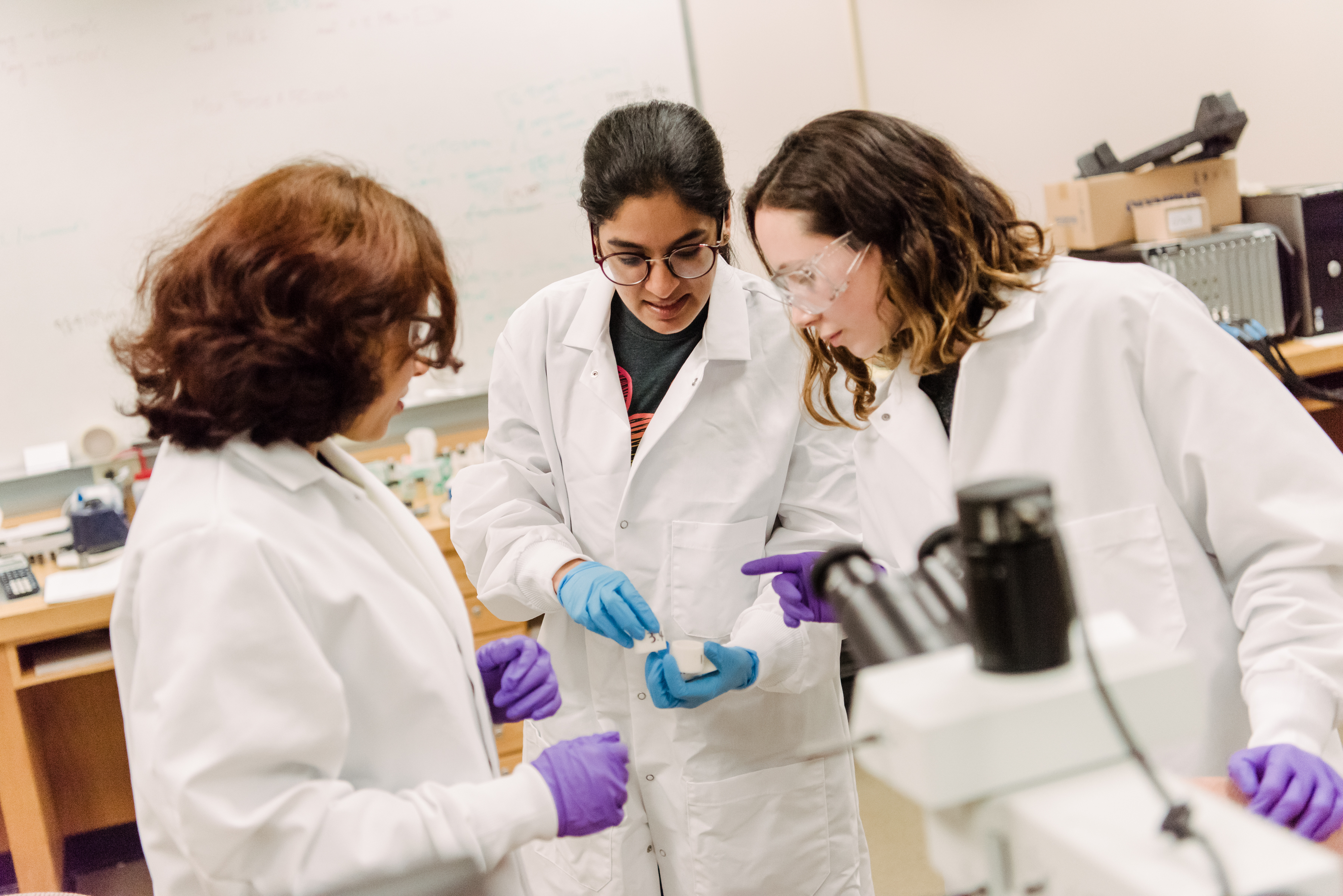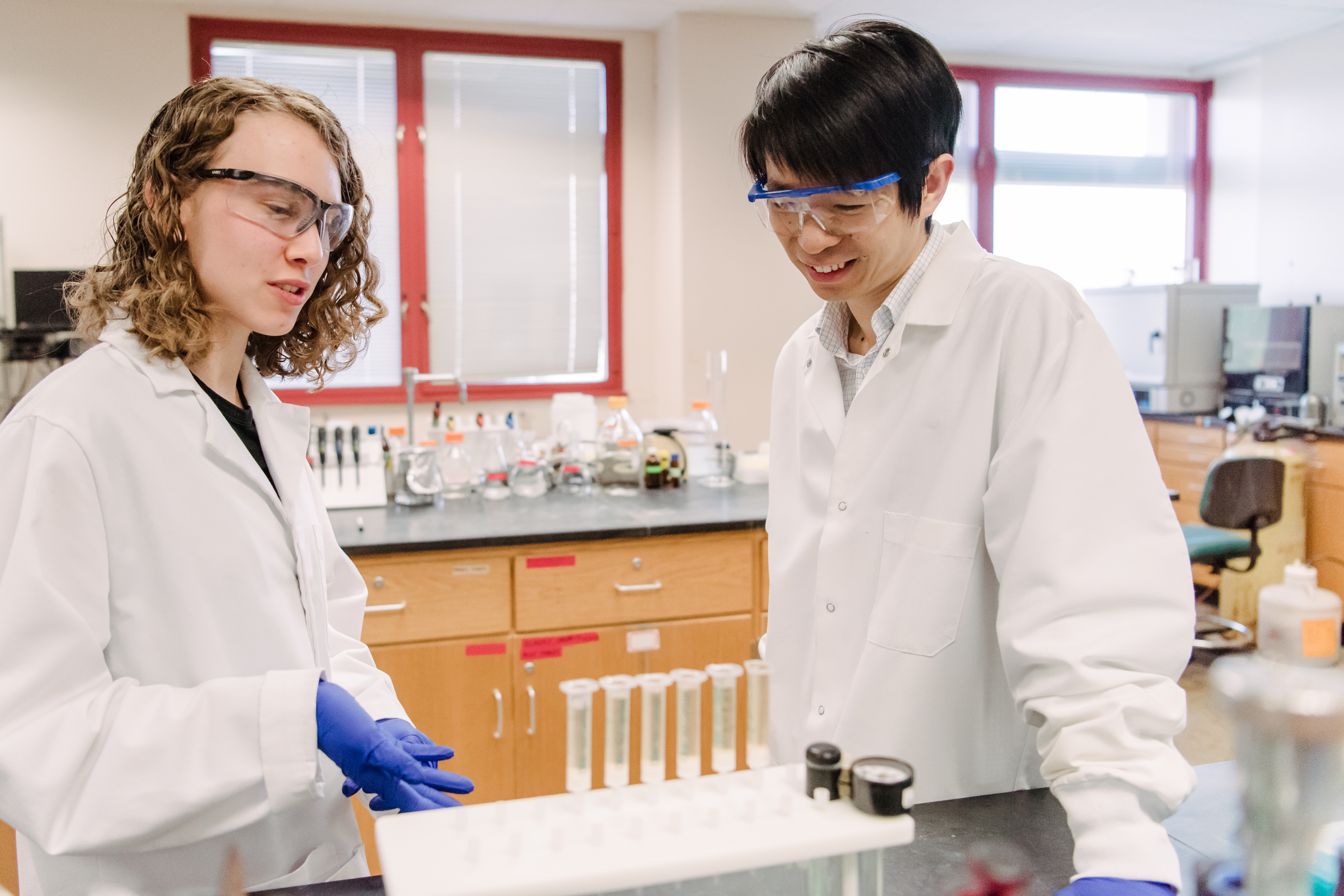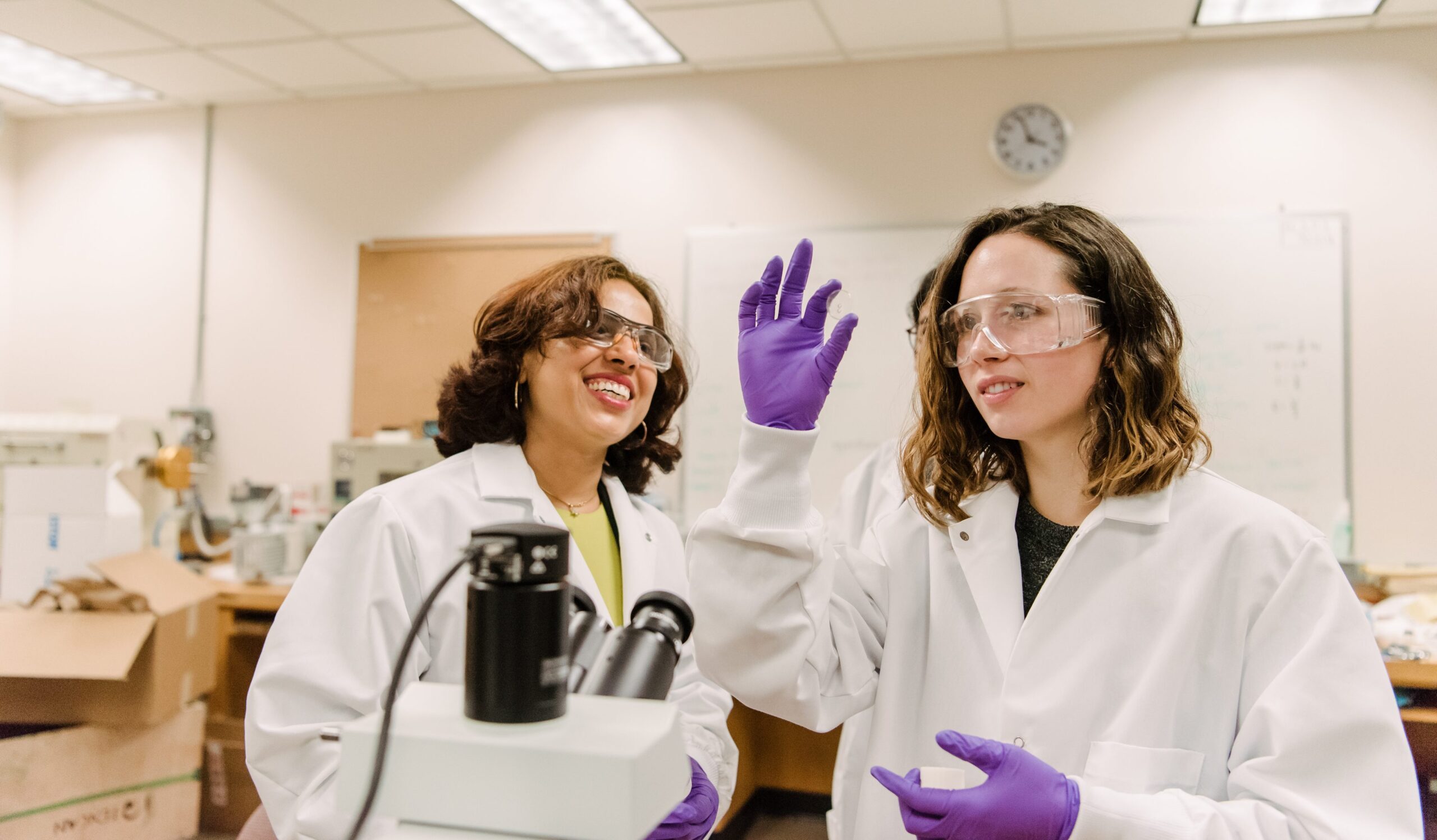UMBC’s annual Undergraduate Research and Creative Achievement Day allows students to reflect on a year or more of work intensively focused on a project, often with close guidance from a faculty mentor. These mentors have deep and long-lasting impacts on the students who work with them, and the students’ creativity and fresh perspectives inspire their mentors.
Like many faculty across UMBC, Greg Szeto, assistant professor of chemical, biochemical, and environmental engineering, has guided undergraduate and graduate students to achieve a deeper understanding of their discipline. “Being a mentor is the most impactful thing we can do with our time,” he says.
“It’s a mentor’s job to provide comprehensive and diverse experiences that are customized to fit different individuals’ goals and stage of development and to consistently fine-tune those experiences over time,” Szeto explains. “We help provide a safe environment where students can explore their interests in research and determine what the right path is for their future.”
Engineering solutions to health challenges
When Nicole Couturier ‘19, chemical engineering, began exploring options to get involved with research, she wasn’t sure which direction to take. She was intrigued to learn about the interdisciplinary approach to Szeto’s lab, which combines engineering, biology, and human health.
Couturier, a MARC scholar, began working in Szeto’s lab in spring 2017, studying the properties of gold nanoparticles that can potentially be used as immunotherapy agents. She explains that these nanoparticles can “offer an alternative approach to traditional treatment methods by carrying drugs inside their core.” The nanoparticles also have molecules attached to their surfaces that direct them to specific sites within the body, Couturier adds.
Szeto has encouraged Couturier to explore and expand the scope of her work. “Because I have been able to participate in different projects with a range of focuses, I have been able to learn about many different areas of research both inside and outside the field of immunology,” she says. She adds that Szeto had helped her keep her expectations in check, sharing, “One of the most helpful pieces of advice that Dr. Szeto has shared is to remind me that it’s okay at the end of the day if I still don’t know the answer to something.”
For other students seeking research mentors, Szeto suggests, “The fit between a student and a mentor is even more important than finding a perfect intellectual match with research topic at most career stages.”
He notes that strong mentoring relationships benefit everyone, but are particularly important for people early in their careers. “Having supportive mentors and advocates invested in your success as an undergraduate can fundamentally change someone’s perspective on career goals, and their decision to pursue a Ph.D. or career in research,” Szeto says.
From doing research to becoming a researcher
Conducting research in Szeto’s lab has allowed Kojo Bonsu ‘18, chemical engineering, to think about how chemical engineering can address health challenges in new ways.
“I was always interested in applying chemical engineering principles and methodologies to research in biology and medicine, but did not think about doing so by approaching the problems from the immune system,” Bonsu says. “After meeting with Dr. Szeto, I clearly saw how chemical engineering could provide new solutions to long-standing problems in biotechnology and human health.”
Bonsu joined Szeto’s lab in fall 2017. With a strong background in research, he was looking for opportunities to do more independent work. Szeto worked with Bonsu to develop a research experience that included experimental design, data analysis, and project troubleshooting. Bonsu says that this time in Szeto’s lab challenged him to think about possible solutions to obstacles in creative ways.
“This experience truly allowed me to see myself as a researcher and spurred my desires to go to graduate school to further expand upon my knowledge of engineering solutions to a host of problems,” Bonsu says.
Creating a supportive environment for women in STEM
Karla Negrete ‘19, mechanical engineering, a Hill-Lopes Scholar, was drawn to Deepa Madan’s lab after she took a course about the chemical and physical aspects of materials.
Madan has guided Negrete through research on the materials and design of batteries. She focuses on preparing an efficient and safe electrolyte layer for batteries, to avoid the pitfalls of hazardous materials, short lifespan, and susceptibility to damage that are common to conventional designs.

Negrete is exploring how to replace the liquid in batteries with gel polymer electrolytes while avoiding the challenge of crystallization. “Our research seeks to…introduce the use of novel nanofiber cellulose, which is extracted from wood, as the main constituent in preparing our thin gel electrolytes,” she says.
“Dr. Madan has been a mentor to me in many ways,” Negrete reflects, “but the most important has been her ability to believe in me and stand behind me.”
That active interest, encouragement and confidence-building are central to Madan’s mentoring approach.“I believe the likelihood of students achieving their immediate and possibly long-term career goals can be significantly increased if students believe their mentors are genuinely interested in student success, and students see the activity and engagement as a stepping stone for their successful careers,” Madan says.
Negrete has also been mentored by Aswani Poosapati, Ph.D. ‘23, mechanical engineering, and she says that being a part of a supportive research team has been empowering. “The most rewarding part of working with Dr. Madan has been the welcoming environment that she creates in her lab,” says Negrete. “From the beginning, Dr. Madan and Aswani Poosapati have taught me, challenged me, guided me, and trusted me to be a part of this research.”
Much of Madan’s work with students like Negrete focuses on the nuts and bolts of research: how to conduct a literature review, how to access networking opportunities, and how to use research opportunities as steps toward achieving research goals. At another level, she also sees tremendous value in serving as a resource and sounding board for young women beginning careers in STEM fields.
“I feel my research experiences and story motivate our female students to come and talk to me about their research interests, which I feel some are hesitant to share,” she says. “Many of them are flourishing and are positively surprised by how well their research is progressing in a discipline that once appeared so intimidating.” In a field where women are underrepresented, Madan notes, “It’s not surprising to me that more than half of the students working in my lab are female students.”
Gaining confidence through challenges
Anna Feerick ‘19, chemistry, remembers standing outside the door to Lee Blaney’s lab. Blaney worked in a different department (chemical, biochemical, and environmental engineering), but Feerick was fascinated by how his lab applied chemistry to major environmental challenges.
“While reading the research posters outside of the lab, I could see the passion this lab has toward discovery and innovation,” recalls Feerick. “I wanted to match their enthusiasm with my own and was willing to work as hard as needed to get there.”

The research conducted in Blaney’s lab is interdisciplinary, and involves undergraduate and graduate students. In addition to working with Blaney, Feerick has had an opportunity to work closely with Ke He, Ph.D. ‘17, chemical engineering, and Ethan Hain, Ph.D. ‘23, chemical engineering.
When Feerick first joined the lab, she spent time measuring salts for water samples, freeze-drying and measuring sediment samples, and measuring tissue from oysters from the Chesapeake Bay. These tasks showed her the importance of carefully following lab protocols to ensure that contaminant levels were accurately analyzed.
Over time, Feerick was able to take on increasingly challenging work in the lab, which she found to be highly rewarding. “[Blaney] balances the difficulty of the task with our ability to overcome it,” she says. “His confidence in my ability gives me the determination needed to complete it.”
Supporting this growth over time is the core of how Blaney sees mentoring. “Unlike many undergraduate and graduate courses, research involves open-ended questions without known answers,” he points out. “This scenario can be daunting for many students.”
“I think the real importance of mentors stems from their ability to help students make the transition from homework and exam problems to complex, long-term research projects,” Blaney explains. “Mentors play a critical role in contributing to the personal and professional growth of students at every step of that journey.”
Banner image: Karla Negrete, right, working alongside Deepa Madan in the lab. All photos by Marlayna Demond ’11 for UMBC unless otherwise noted.
Tags: Biology, CBEE, COEIT, MechE, SE, Undergraduate Research

